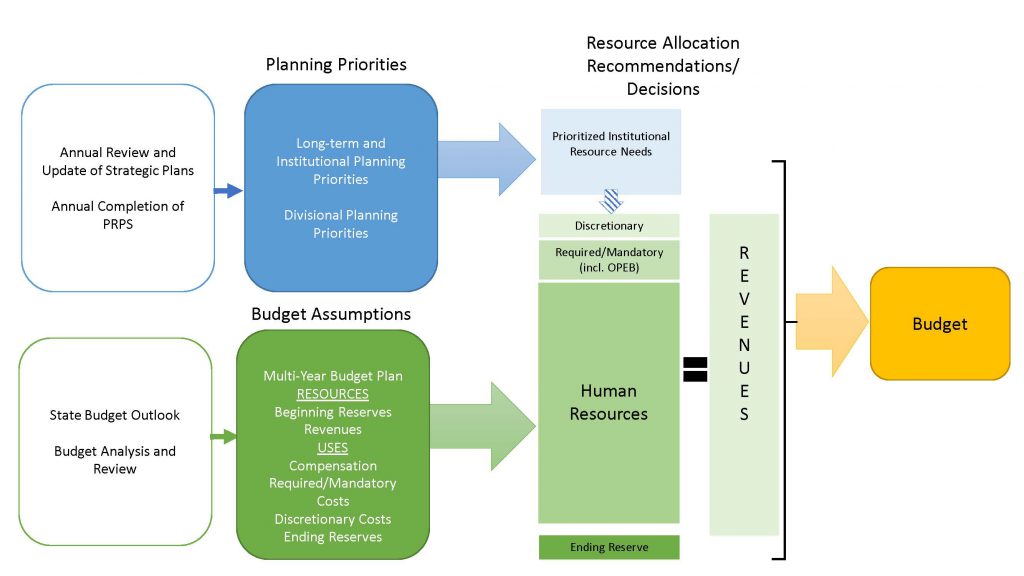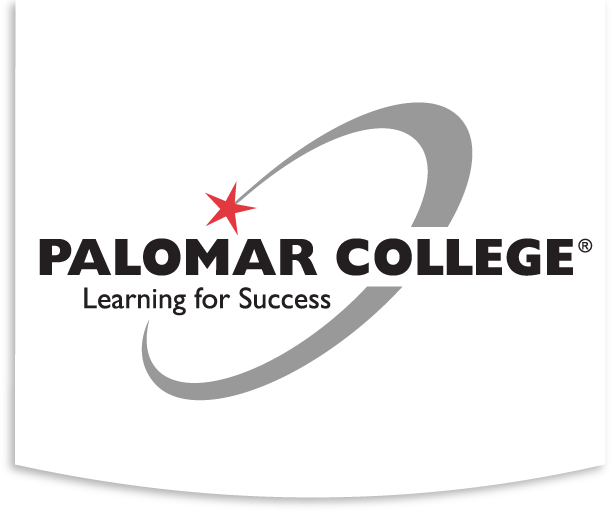Integrated Planning & Resource Allocation Decision-Making Model
Palomar engages in continuous, broad-based, and systematic evaluation and planning through the Integrated Planning, Evaluation, and Resource Allocation Decision-Making Model (IPM). The IPM integrates short-range, mid-range, and long-term planning to maximize resources to facilitate student access, retention, and success. The cycles of the Educational Plan, Facilities Plan, Staffing Plan, and Technology Plan are integrated to ensure the ongoing influence of the three-year planning cycle of the Strategic Plan and the Program Review and Planning process.
Integrated Planning & Resource Allocation Decision-Making Model
The Resource Allocation Model (RAM) at the core of the IPM guarantees that College planning priorities and budget assumptions drive resource allocation decision-making. The RAM is the College’s ongoing, transparent, and inclusive process to arrive at an annual balanced operating budget that links available resource allocation and budget requirements to planning and reviews.

Planning Alignment with Vision, Mission, and Values
The College aligns programs and services with its Vision, Mission, and Values as part of the vision planning, strategic planning, and Program Review and Planning (PRP) processes, which together inform institutional decision making, goal setting, and resource allocation.
Vision
Transforming lives for a better future.
Mission
Palomar College respects each of our students’ experiences and supports them to achieve academic success. As a community college, we encourage our students to embrace the best version of themselves and prepare them to engage with our local and global communities.
Values
In creating the learning and cultural experience that fulfill our mission, we are committed to serving our community, including historically and currently marginalized and racially minoritized populations. In doing so, we are guided by the core values of:
Access
We make education possible for everyone.
Diversity, Equity, and Inclusion
We recognize and respect diversity, seek to foster a culture of inclusion and belonging, and strive to address inequities.
Academic Excellence
We provide quality programs and robust course offerings to support students who are pursuing transfer-readiness, general education, career and technical training, aesthetic and cultural enrichment, and lifelong education.
Student Focused
We offer a caring and supportive environment that addresses the holistic and distinct needs of our students.
Community
We are an integral part of our region and strive to foster meaningful relationships within our college and local communities.
Transformation
We inspire learning, improvement, and growth for all.
Long-Range Planning
Vision Planning
The Educational Vision Plan (EV) establishes long-range goals of the College and drives all other College plans. The Facilities Plan supports the EVP. Each is completed on a 12-year cycle with a comprehensive update in year six.
Student Equity Planning
Plan that promotes success of and provide support to students with disproportionate impact.
Mid-Range Planning
Strategic Planning
Three-year strategic plans, action plans, progress and summary reports, and supporting data.
Strategic Enrollment Management
Goals for student access, retention, completion, and community engagement/fiscal stability.
Staffing Planning
Systematic identification and prioritization of the District’s staffing needs over a six-year period.
Technology Planning
Broad technology goals designed to support the District’s strategic goals and sustain ongoing operations.
Short-Range Planning
Program Review and Planning
Comprehensive and annual Program Review and Planning (PRP) of instructional programs and non-instructional departments
Image Sources
- Pages from Integrated Planning Model_SPC (2)_2021-RA: Palomar College

